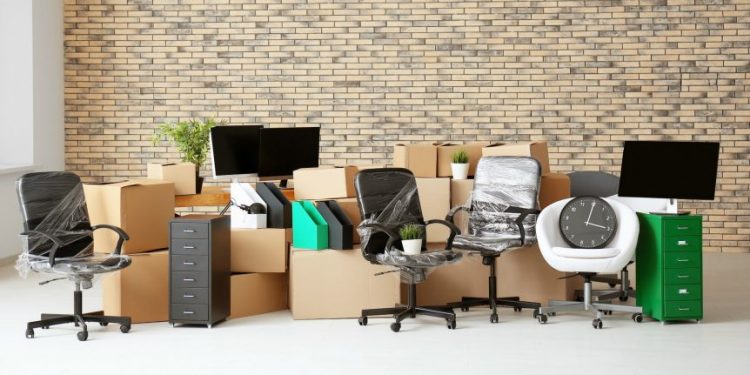Moving an entire office, no matter how big or small requires a lot of work and effort. There are countless moving parts, that you need to consider before you finally head out of your old space, and into a new one.
Moving offices can be extremely stressful, but you shouldn’t let it get the best of you! Keep a detailed moving checklist of all the things you need to do, and cross them off one by one.
Before the Move
The majority of moving prep-work should be done beforehand, and it’s best if you can plan at least five or six months ahead. That’s the ideal moment to check your current lease and see how the new move affects it.
Will you owe a deposit if you move out early? Are you supposed to pay for any minor damage that happens during the move? Reviewing your lease before making any hard plans can potentially save/cost you a lot of money, so stay in the know.
Also, you should notify your current landlord about the move around this time. Tell them when you plan on terminating the lease, and if you can, give them an exact move-out date.
Planning the Logistics
Once you have a solid understanding of the lease terms, it’s time to start looking at moving companies and ask for quotes. Look at and compare a couple of different movers to see who would be the best fit for your business.
Also, you should consider if you want to get moving insurance. It’s generally a good idea to have it, but we especially recommend it if you’re moving some sort of expensive, specialized equipment. Don’t be afraid to opt for higher coverage because that could potentially be a lifesaver in case something goes wrong.
Assemble a Team
If you want the office move to go as smoothly as possible, your best bet is to involve some of your employees. Give each of them their own responsibility, and put them in charge of some part of the move. It’s best to get more people involved to avoid overwhelming anyone in your team.
Communicate With Movers, Customers, and Suppliers
Around three months before the big day, it’s time to start putting together a checklist and announcing your plans. Also, at this point, you should have a fixed moving date so that you can plan to work around it.
First, tell the date to the movers you’ve hired, and make sure that they know the complete timetable. Don’t leave them out of the planning phase because they’re instrumental in the entire process.
What’s more, now that you have your address and moving date, you need to start notifying your customers. The best way to ensure that your clients can always find you is to keep your business info updated. Put a banner on your website, and a notification on your store/business, clearly telling people where they’ll be able to find you.
Another major step that you can’t miss is giving your suppliers, affiliates, and partners updates of what’s going on. Make sure that they’re in the loop and know what your new location is going to be.
Planning the Layout
One thing that’ll make your move easier is planning the layout of the new space ahead of time. If you can, get floor plans, and start thinking about where you want to put all your inventory and equipment.
Of course, you can workshop this layout up until the move, just make sure to settle on something. Also, make copies of the layout and give them to your employees who are helping with the move, as well as the movers.
So when the big day comes, everyone will know exactly where things go. In turn, your new space will already be pretty organized by the time the movers are done, and it won’t need much work later.
Decluttering and Optimizing Your New Space
One of the biggest benefits of a move, whether it’s residential or commercial, is the chance for a fresh start. You can take the opportunity to declutter your business and get rid of all the bits and pieces that are weighing you down.
If you’re having trouble letting something go, just think about the last time you used that particular thing. The standard rule of thumb is, if you haven’t used it at all in the last year, it might be time to get rid of it.
While Moving
If you can, get to your new space before the movers start bringing in things. Have at least one person stay at your old location to make sure things are running smoothly.
At the new location, prepare for the movers by turning on the lights, as well as the AC/heat. If there’s a problem, call the utility company, and have them sort it out as soon as possible.
You can also begin plugging in phones, IT systems, as well as the internet. And most importantly, walk through the empty office space to check for any damage, and document it all.
After the Move
If everything goes according to plan, there shouldn’t be that much to do after storage moving. You and your employees can start unpacking all the inventory and equipment that you’ve already laid out. You can also double-check whether all your customers and affiliates have your new address and if you’ve properly updated all the business information.
After that, you’re pretty much done! If you’re able to, make sure to do a little something for your employees, and give some words of praise. They’ll probably appreciate it more than you know. We have covered a complete guide on moving companies at Techdee so do check them out.





